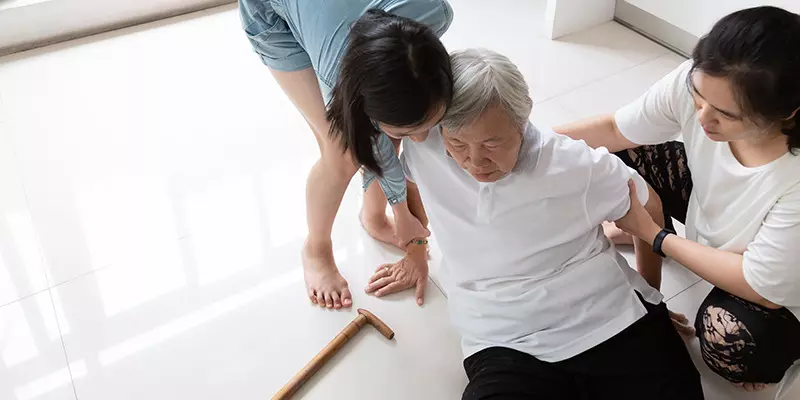Explainer: Why ‘fall risk’ evaluation is crucial for elderly population?
The introduction of new technologies to evaluate the ‘fall risk’ among the elderly has come as a blessing
By Neelambaran A
Representational Image.
Hyderabad: Elderly people falling and suffering from fractures are quite common these days. The fall incidents, resulting in fractures, take a heavy toll on the elderly people, given their physical health, making them suffer for a prolonged period.
The introduction of new technologies to evaluate the ‘fall risk’ among the elderly has come as a blessing, even as several methodologies and techniques prevail in the medical sector to treat and rehabilitate patients after suffering a fall.
A cost-effective and easy evaluation from designated hospitals can save the patients from falling, generally due to balancing problems with the ageing of the brain, and weakening of joints and muscles.
Technology to evaluate fall risk
There are several techniques available to focus on treating the elderly after they suffer fall incidents, there are specialisations in the medical fraternity to treat and rehabilitate the affected people.
The launch of new technology to evaluate the fall risk has been receiving more attention as it predicts the fall rate among the elderly in advance. Following sufficient precautions can save the concerned persons from preventing falls at home and other places of risk.
The two-day workshop held in the KIMS Hospital, Hyderabad, provided hands-on training to around 300 physiotherapists from across five states including Telangana, Andhra Pradesh, Karnataka, Tamil Nadu and Maharashtra.
Dr Ajay Kumar Midde, head of the Department of Neurorehabilitation at the KIMS Hospitals said, “We evaluate the patients under three categories namely maximum, moderate and minimum fall risk through the cost-effective and simple evaluation technology”.
Advice to patients
People above the age of 60 years are recommended to take the test, to save themselves from prospective fall incidents and follow the advice of the doctors.
“We advise those with a high risk of falling to use the walkers for mobility, while those under the moderate risk category are asked to use canes or sticks while walking. Those under the minimum risk factor are advised to exercise caution while using the stairs, wet floor and other potentially risky areas,” Dr Midde said.
Dr Midde said, “Through the new evaluation system we aim to prevent the fall rate among the elderly with sufficient training to the medical professionals.”
‘Diabetes patients need higher evaluation’
Besides the joints and muscles, three systems play an important role in balancing the human body namely the visual system, the vestibular (inner ear) system, and the proprioceptive (sensory nerves) system.
Those patients with long-standing and uncontrolled diabetes are prone to the weakening of the systems. They tend to lose sensation in the joints and muscles making them victims of fall incidents.
“It is true that diabetes patients need higher evaluation than those without comorbidities. However, since these systems are affected due to the ageing process, all those above the age of 60 are recommended to undergo the evaluation. We even recommend altering their residence to reduce the risky areas to save them,” Dr Midde said.
Recommendation for proper posture to avoid joint pains
The prevalence of knee, joint and back pain is increasing across different age categories. These are attributed to the postures of the individuals irrespective of their age group.
Dr Midde said, “Everyone has a different walking style and sitting posture. Some people suffer from such pains while some don’t. We can evaluate the flexibility of knee, spine and joints and recommend them with adequate measures to prevent such impacts.”
The experts strongly recommend the elderly evaluate themselves for fall risk so that any untoward incidents of fall accidents can be prevented.